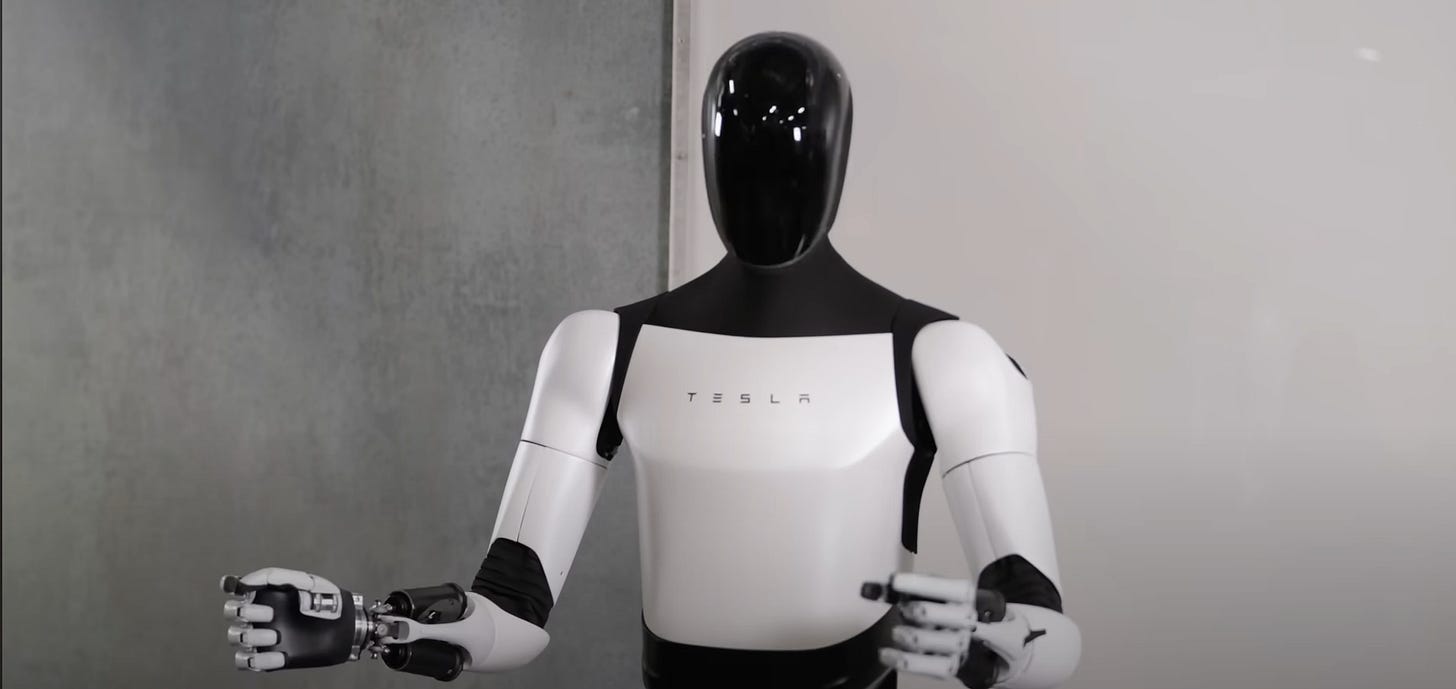The Coming Age of Humanoid Robots
How Humanoid Robots Will Transform Our Daily Lives and Industries
Let’s talk about robots. Do you remember when you got your first desktop PC? Your first laptop? Alexa? Or your first smartphone (mine was the iPhone 3GS)? Well, soon you might have a new device in your life: a humanoid robot.
According to Elon Musk, there will be about 1 billion humanoid robots on Earth by 2040. Elon, the CEO of Tesla, is building the Optimus robots. Rumors suggest these robots are already in early production, partially built by other Optimus robots.
Elon Musk is known for his aggressive predictions and timelines, but he is not alone in this. Investor Cathie Wood forecasts that the market for humanoid robots could grow to $1 trillion by 2030. In December 2023, billionaire venture capitalist Vinod Khosla predicted: “By 2040, there could be a billion bipedal robots performing a wide range of tasks, including fine manipulation. This could free humans from undesirable jobs like assembly line and farm work, potentially making this industry larger than the auto industry.” Serial entrepreneur Brett Adcock, founder of the robotics company Figure, suggests an even more staggering number, predicting up to 10 billion humanoid robots during our lifetime, which is remarkable considering there are only about 1.5 billion cars on Earth as of 2023.
What Can These Robots Do?
By definition, a humanoid robot is a robot resembling the human body in shape. The design may be for functional purposes, such as interacting with human tools and environments, for experimental purposes, such as the study of bipedal locomotion, or for other purposes. Upcoming consumer humanoid robots are expected to help with household chores, security, babysitting, caregiving, entertainment, tutoring, playing musical instruments, and more.
Much like humans, robots learn and gain expertise from their interactions and adjust to new environments. However, unlike us humans, robots are networked and gain shared knowledge and experiences from each other. One robot learning to use a screwdriver means every networked robot gains the ability to use a screwdriver. They will also get better at the task the more they use a screwdriver. The combination of shared learning and high-bandwidth networking means that these helpers will get better and better at their tasks in a very short time.
How Much Will These Robots Cost?
Estimates for the cost of these robots vary widely. Some projections suggest prices as high as $150,000, while others estimate as low as $5,000. The Unitree G1, for example, was recently announced at $16,000 and boasts advanced capabilities. For the price of a car, you might soon own a full-time assistant for your home or business.
Why It Matters
As we stand at the edge of this robotic revolution, one thing remains clear, irrespective of the exact numbers and estimates: the introduction of humanoid robots into our societies will irrevocably redefine the dynamics of human interaction, labor, and daily life. Indeed, we're on the brink of witnessing this transformation unfold.
Humanoid robots have the potential to take over mundane and repetitive tasks, freeing humans to focus on more creative, strategic, and emotionally fulfilling activities. They could revolutionize industries, enhance productivity, and improve the quality of life. However, this transition also brings challenges, such as ensuring ethical considerations, managing job displacement, and integrating these robots into our societal fabric.
As we look forward to this new era, it is crucial to consider both the opportunities and challenges that humanoid robots present. Embracing this technology thoughtfully and responsibly will help us harness its full potential, leading to a future where humans and robots coexist and collaborate harmoniously.
Conclusion
The prospect of having humanoid robots as part of our daily lives is no longer a distant dream but an imminent reality. As these intelligent machines become more integrated into our homes and workplaces, they will reshape our world in ways we can only begin to imagine. The future of humanoid robots is bright, and their impact on society will be profound. Let's prepare for this exciting journey into the next frontier of technological advancement.






